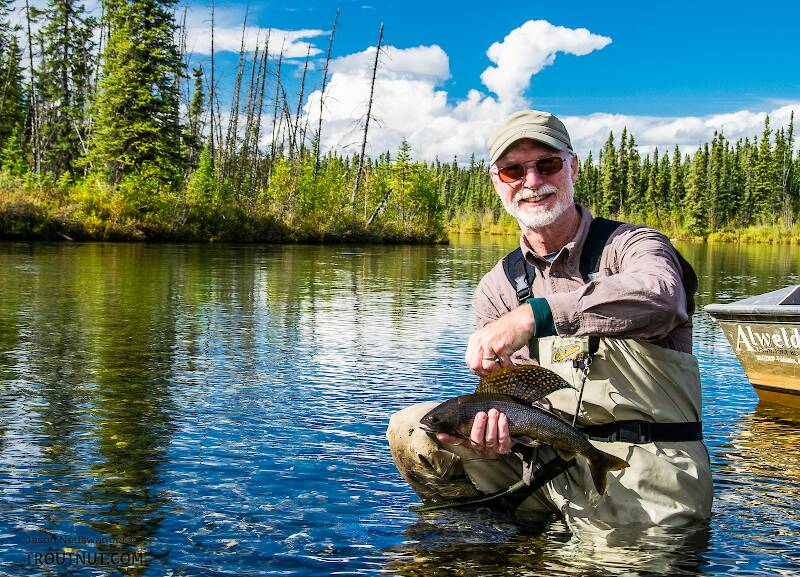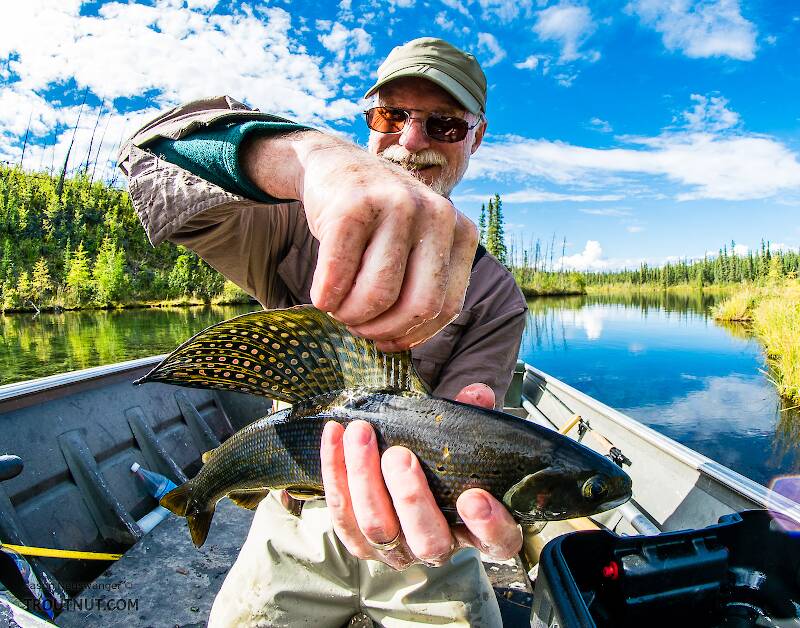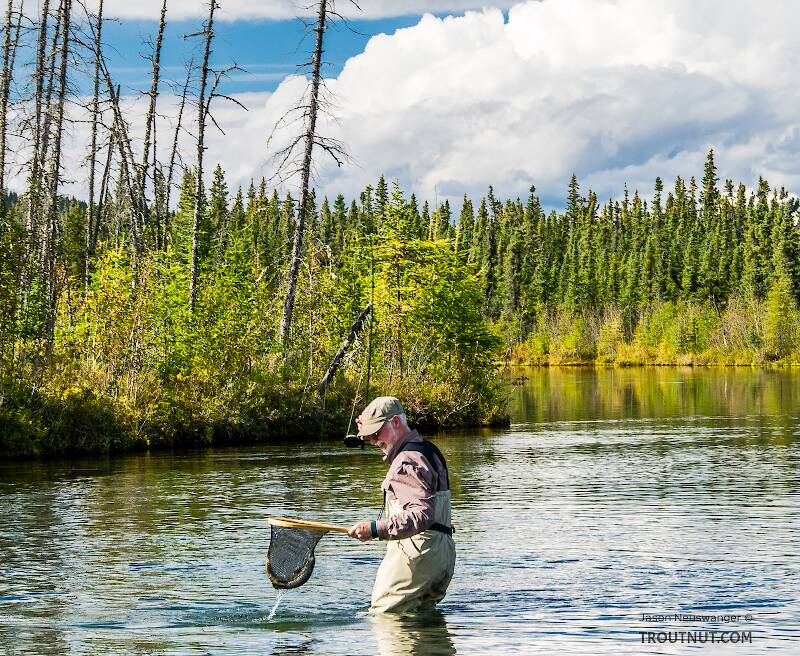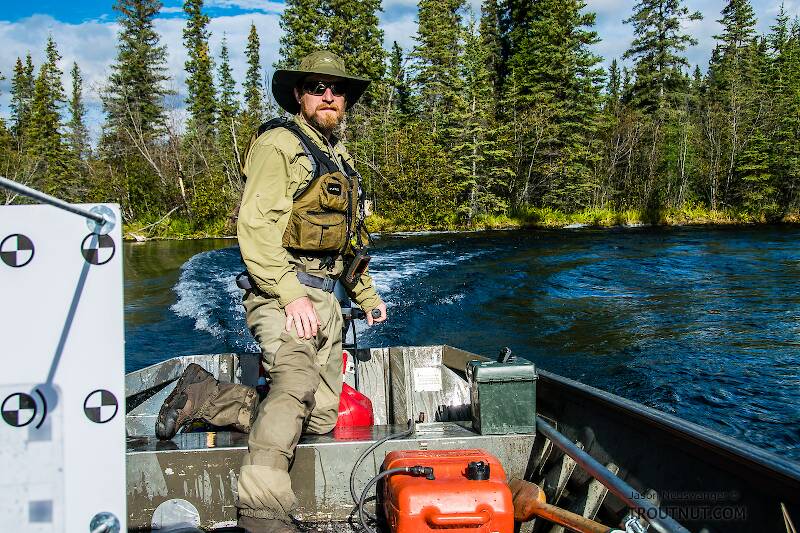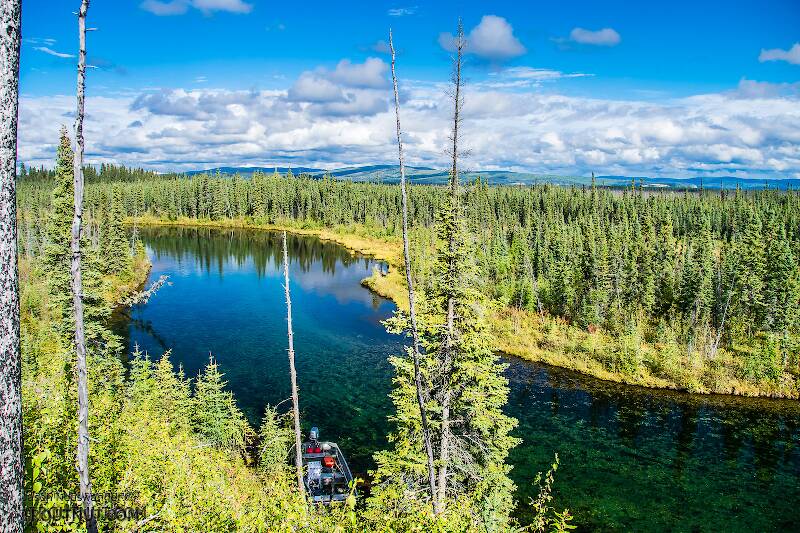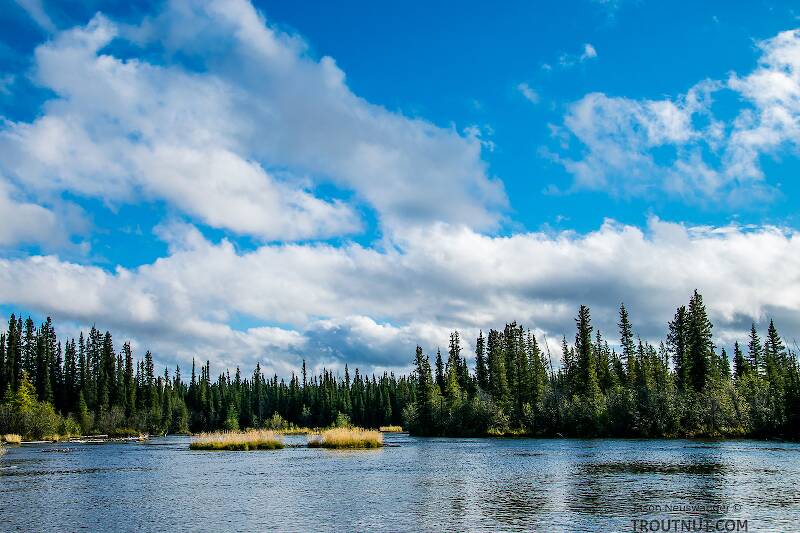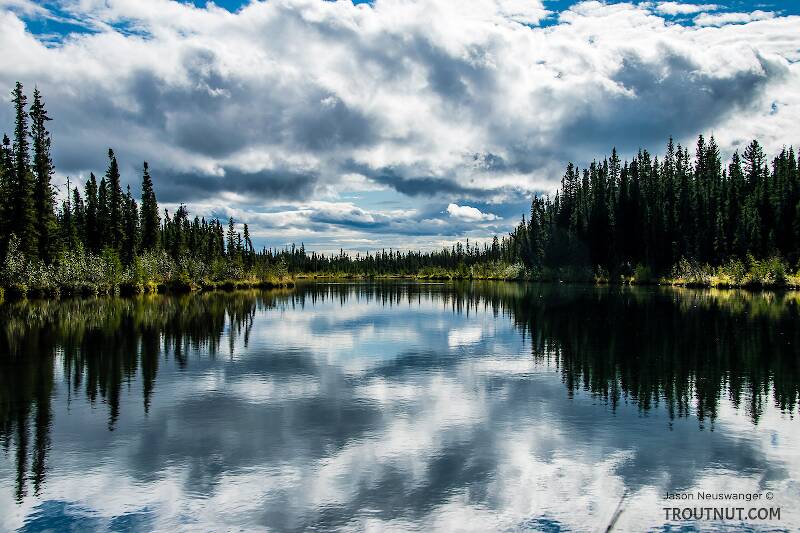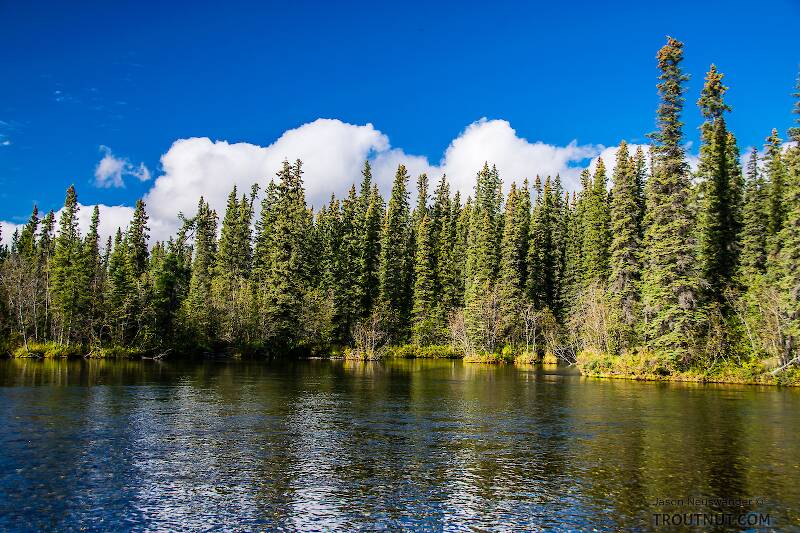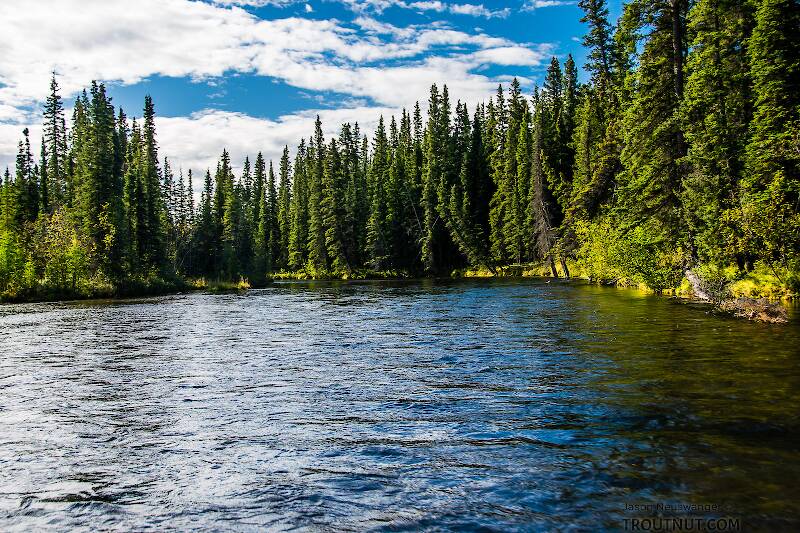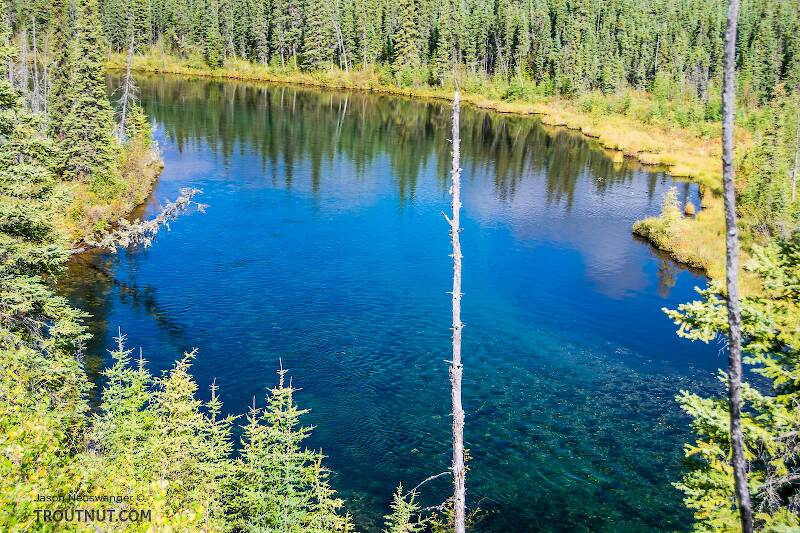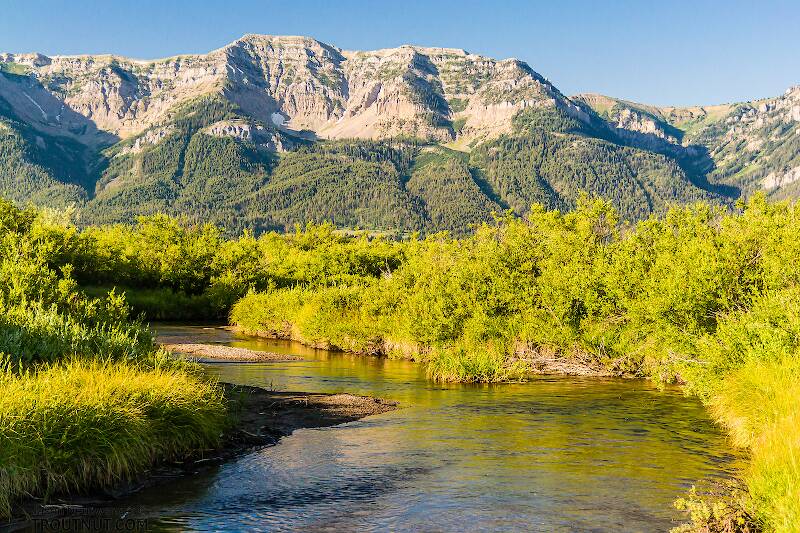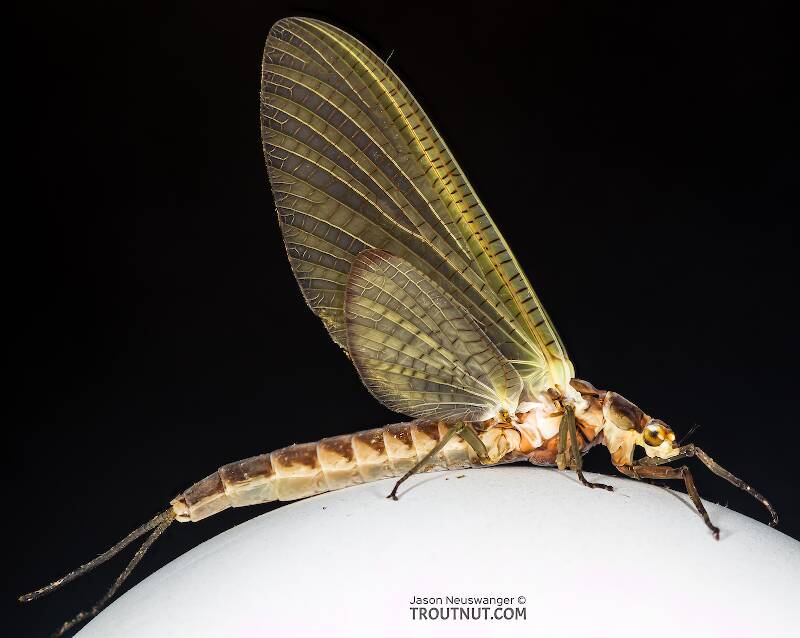
Hex Mayflies
Hexagenia limbata
The famous nocturnal Hex hatch of the Midwest (and a few other lucky locations) stirs to the surface mythically large brown trout that only touch streamers for the rest of the year.
Featured on the forum
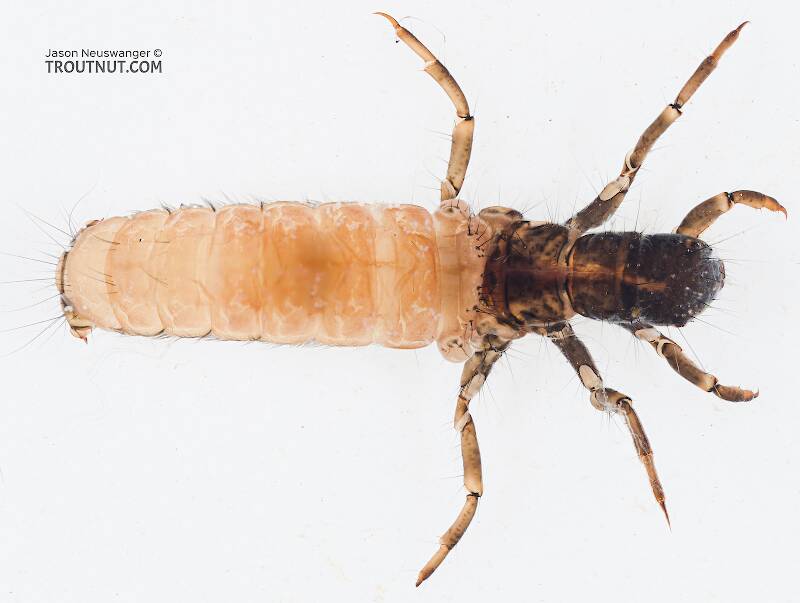
This specimen resembled several others of around the same size and perhaps the same species, which were pretty common in my February sample from the upper Yakima. Unfortunately, I misplaced the specimen before I could get it under a microscope for a definitive ID.
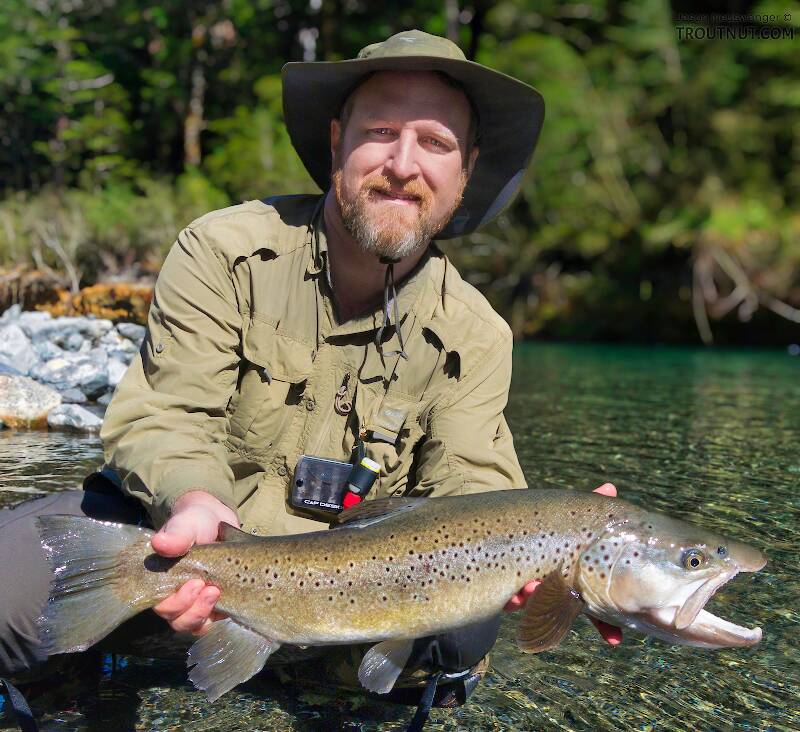
Troutnut is a project started in 2003 by salmonid ecologist Jason "Troutnut" Neuswanger to help anglers and
fly tyers unabashedly embrace the entomological side of the sport. Learn more about Troutnut or
support the project for an enhanced experience here.
By Dneuswanger on August 24th, 2014
Morning broke clear, cool, and calm. After arranging some dry kindling I had placed in my vestibule the night before, I used some flammable “spruce goo” (the sticky sap that leaks out onto the bark of wounded spruce trees) to ignite a campfire, then heated water for coffee so I could warm myself inside and out. I stared into the fire while reveling in my new-found freedom (retirement), luxuriating in the aroma of wood smoke and sipping hot coffee as the Sun broke over the horizon. From my perspective, this campsite – circumscribed by a sparkling stream and its spires of riparian spruce – was more tranquil and spiritually nurturing than any manmade cathedral. In places like this, the competitive pursuits of men appear trivial, and all is governed by natural law. There is no blame and no forgiveness – only a beautiful and unbiased reality that demands both appreciation and respect.

Our hen pintail was back again this morning, feeding over shallow gravel across from camp. I wish I knew what attracted her, and only her, to this spot. By 10:30 a.m. we were organized for a final day of work on the river. Jason jet-motored our Jon boat full of sampling gear upstream to find the best spot to film grayling and catch them with fly-fishing gear to see what they’d been eating.
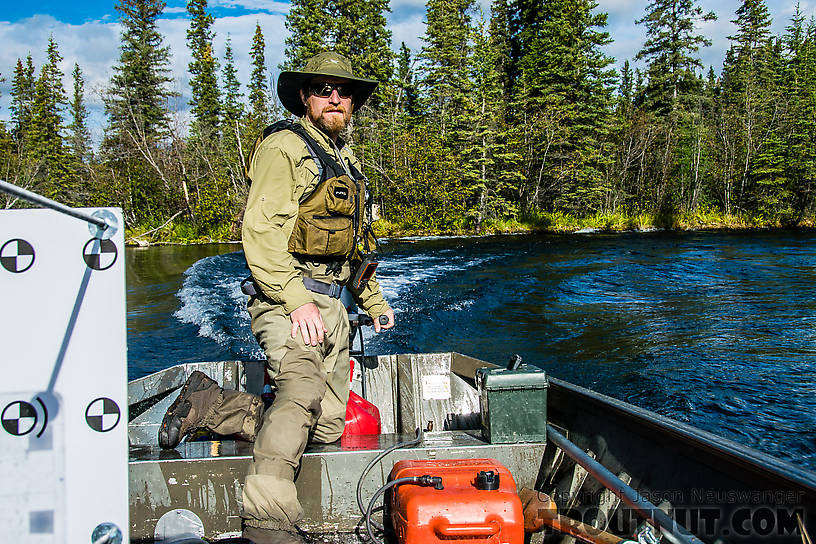
We carefully scouted the next mile of river, peering into the crystal clear water with polarized sunglasses to see where grayling were either milling about in large groups or drift-feeding in semi-stationary positions. Finally we stopped at a deep run that had a good number of non-transient fish, and more importantly, fish we might be able to film with near-shore underwater camera gear.
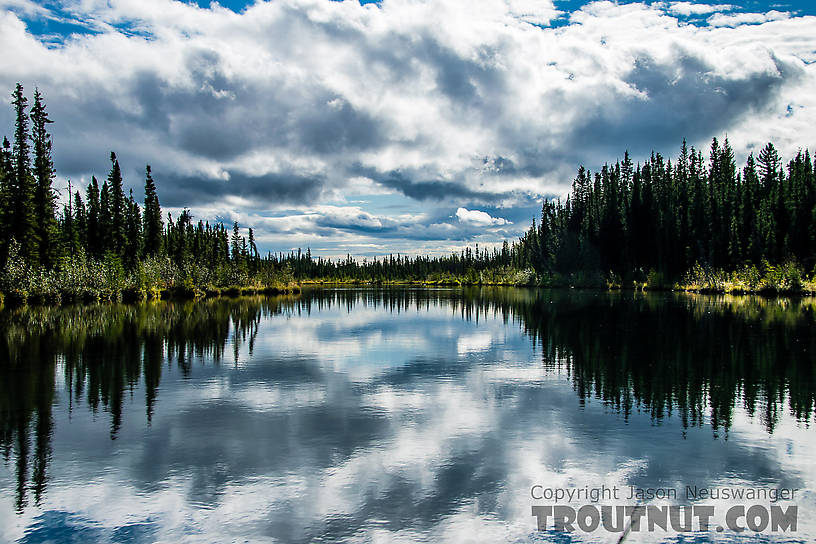
Climbing a steep slope on the right ascending bank through dense shrubs and small trees regenerating after a recent wildfire, we were treated to a breathtaking view of our study site and the wilderness beyond. By Noon we were setting up to work here.
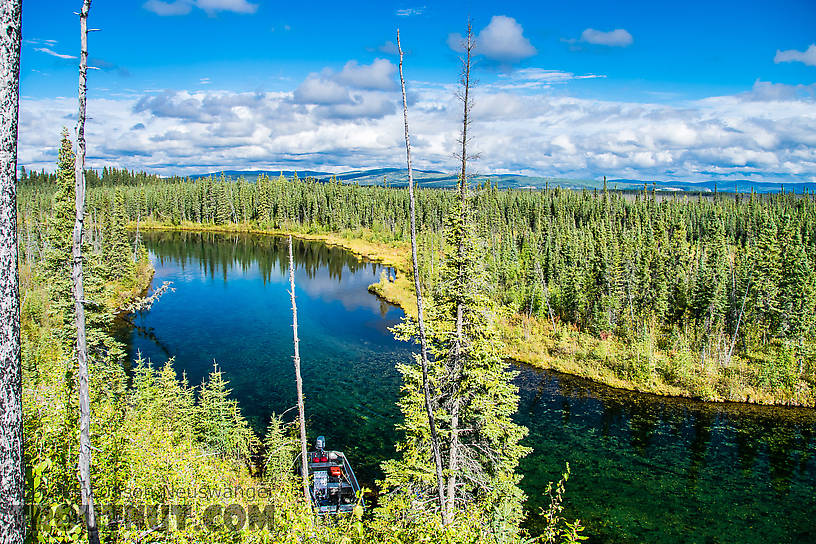
By mid-afternoon we had completed our drift-net sampling, velocity calibrations, and video recording of drift-feeding fish, so we began fly-fishing in the same location in order to capture fish for diet analysis.
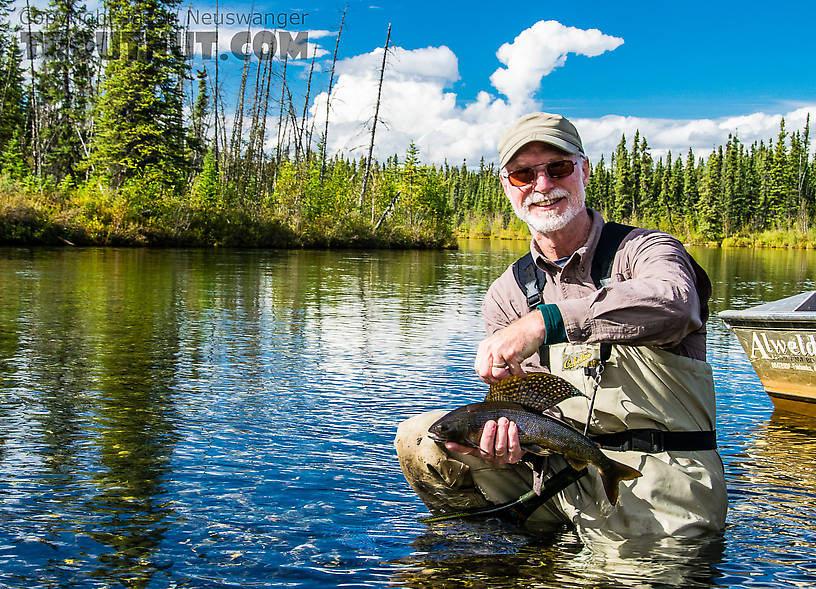
Among other things, Jason hopes to learn whether grayling feed selectively or eat small items of prey in proportion to their appearance in the drift-net samples. Once again, the discovery of large numbers of caddis fly larvae still in their tiny gravel cases revealed that these fish can forego drift-feeding to become active benthic grazers. Video footage of benthic feeding corroborated this conclusion, and at the same time reminded us to interpret diet data cautiously. The cased caddis larvae were visibly crawling around on the bottom, frequently losing their grip and drifting a few cobbles downstream. Some of the larvae in grayling stomachs were probably captured during these drifts, too. Hmmm… I wonder if this is what all those ducks were eating this morning near camp?

By late afternoon we had accomplished the sampling mission, so we returned to camp and spent the next couple hours packing up. The boat ride down the study stream and back up the Tanana was uneventful, but loading out back at the landing was another matter. Unknown to us, the right standard intended to guide the borrowed boat onto its trailer was not firmly bolted to the trailer frame. I guided the boat full of gear onto the trailer without incident in the mild current of the creek, but when Jason started to tow the heavy load out, current and vibration pushed the boat over the right standard. I yelled, “Whoa!” to Jason as I watched the mishap unfold, but the boat had already crashed off the right side of the trailer at a precarious angle with the stern almost underwater and the bow still connected to the trailer winch. We had no choice but to unload everything at the muddy shoreline, push the boat back out into the river, realign and tighten the right standard, reload the boat, and then load all our gear either back into the boat or into the back of Jason’s RAV4. This was not how we had planned to end an already long day, but we got it done and were able to tow the boat up the steep ramp after I showed Jason how to align the vehicle and trailer at angles to one another in order to develop early momentum and power to pull. Fortunately there was nobody at the boat ramp to witness the debacle.

Our hen pintail was back again this morning, feeding over shallow gravel across from camp. I wish I knew what attracted her, and only her, to this spot. By 10:30 a.m. we were organized for a final day of work on the river. Jason jet-motored our Jon boat full of sampling gear upstream to find the best spot to film grayling and catch them with fly-fishing gear to see what they’d been eating.

We carefully scouted the next mile of river, peering into the crystal clear water with polarized sunglasses to see where grayling were either milling about in large groups or drift-feeding in semi-stationary positions. Finally we stopped at a deep run that had a good number of non-transient fish, and more importantly, fish we might be able to film with near-shore underwater camera gear.

Climbing a steep slope on the right ascending bank through dense shrubs and small trees regenerating after a recent wildfire, we were treated to a breathtaking view of our study site and the wilderness beyond. By Noon we were setting up to work here.

By mid-afternoon we had completed our drift-net sampling, velocity calibrations, and video recording of drift-feeding fish, so we began fly-fishing in the same location in order to capture fish for diet analysis.

Among other things, Jason hopes to learn whether grayling feed selectively or eat small items of prey in proportion to their appearance in the drift-net samples. Once again, the discovery of large numbers of caddis fly larvae still in their tiny gravel cases revealed that these fish can forego drift-feeding to become active benthic grazers. Video footage of benthic feeding corroborated this conclusion, and at the same time reminded us to interpret diet data cautiously. The cased caddis larvae were visibly crawling around on the bottom, frequently losing their grip and drifting a few cobbles downstream. Some of the larvae in grayling stomachs were probably captured during these drifts, too. Hmmm… I wonder if this is what all those ducks were eating this morning near camp?

By late afternoon we had accomplished the sampling mission, so we returned to camp and spent the next couple hours packing up. The boat ride down the study stream and back up the Tanana was uneventful, but loading out back at the landing was another matter. Unknown to us, the right standard intended to guide the borrowed boat onto its trailer was not firmly bolted to the trailer frame. I guided the boat full of gear onto the trailer without incident in the mild current of the creek, but when Jason started to tow the heavy load out, current and vibration pushed the boat over the right standard. I yelled, “Whoa!” to Jason as I watched the mishap unfold, but the boat had already crashed off the right side of the trailer at a precarious angle with the stern almost underwater and the bow still connected to the trailer winch. We had no choice but to unload everything at the muddy shoreline, push the boat back out into the river, realign and tighten the right standard, reload the boat, and then load all our gear either back into the boat or into the back of Jason’s RAV4. This was not how we had planned to end an already long day, but we got it done and were able to tow the boat up the steep ramp after I showed Jason how to align the vehicle and trailer at angles to one another in order to develop early momentum and power to pull. Fortunately there was nobody at the boat ramp to witness the debacle.
Photos by Troutnut from Mystery Creek #186 in Alaska
